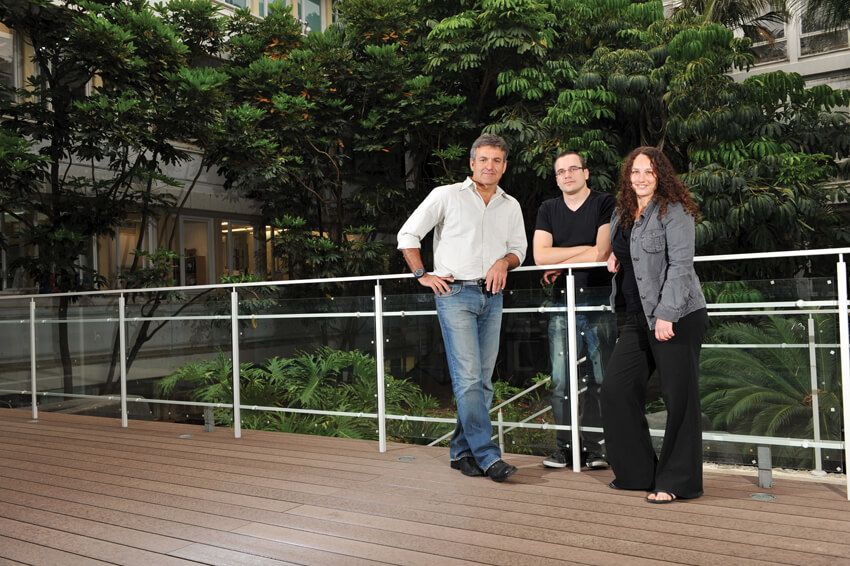"Many scientists are beginning to understand the importance of a certain type of recycling activity in the cell, called 'autophagy'"

Accumulation of broken furniture and appliances in the house can cause crowding, pressure and disruption of lifestyles. If we don't get rid of them, life at home will become unbearable. In the living cell, whose resources are limited, it is important not only to eliminate the old and damaged components, but also to recycle them for reuse. "Luckily for us," says Prof. Zebulon Elazar from the Department of Chemical Biology at the Weizmann Institute of Science, "many scientists are beginning to understand the importance of a certain type of recycling activity in the cell, called 'autophagy' (Greek: 'eating itself')." This process is necessary for all the activities carried out in the body's cells, from growth to cancer prevention. Malfunctions in the autophagy mechanism may contribute to diseases such as Parkinson's, inflammatory bowel diseases, and more.
Autophagy comes into action during times of scarcity, to break down the less necessary components, thus strengthening the main functions, but it also plays an important role in the day-to-day maintenance of the cell. The components intended for recycling are led to be broken down in a special organelle called the autophagosome, which is a sort of small and separate compartment, wrapped in a double membrane.
In the living cell, even the recycling equipment is not left idle: the autophagosome is broken down and rebuilt as needed. Small membrane parts join together and form a unique membrane called pagophore. During the joining process, the phagopore expands and forms a cup shape. The cup gradually wraps the material for recycling, and eventually closes around it hermetically. Prof. Elazar and research students Hila Vidberg and Tomer Spilka study the "bolts and nuts" that connect the autophagosome. In a study recently published in the scientific journals EMBO Journal and Developmental Cell, they described how they uncovered the activity of two proteins that fuse with each other and connect the parts of the autophagosome membrane.
These two proteins, known as LC3B and GATE-16 (the GATE-16 protein was first discovered several years ago, in Prof. Elazar's laboratory), have similar properties to other proteins in the cell - and especially to ubiquitin, a kind of small label that is attached to certain proteins to mark them as candidates for liquidation. Despite their resemblance to ubiquitin, the proteins LC3B and GATE-16 bind to lipids - the fatty molecules that make up cell membranes - and not to other proteins, and the chemical bonds they form with them are particularly strong (covalent bonds). The scientists discovered that these two proteins are necessary for the construction of the autophagosome: when they blocked them one by one, the autophagosome assembly process was not completed properly.
After they occupy an edge of a pagophore, the active sites of these two proteins glue the edges of the membranes together. The parts continue to assemble to form the wall of the autophagosome, and in the process the membranes join to form a single, double-walled structure. The researchers discovered that the active sites of LC3B and GATE-16 take different modes of action, which may explain why the cell needs both. The scientists believe that one of the proteins contributes to the expansion of the phagophore, and it is possible that the other also functions as a "bolt" that closes the membrane when it reaches the required size.
"In this study, a new type of mechanism for connecting membranes in mammalian cells was discovered for the first time," says Prof. Elazar. "Our understanding of the special role played by the autophagy mechanism in almost every biological process grows as we continue to study it. Therefore, it is important for us to understand exactly how this mechanism works."
A classic now
Prof. Zebulon Elazar recommends the book "The Second Letter", by the author Nathaniel Hawthorne, which he read on the recommendation of his children (Elazar is the father of triplets). He finds that the classic book, written about 260 years ago, has kept freshness and relevance, and that the characters and situations described in it are also familiar to modern readers. "I especially enjoyed the opening, which describes the customs house in the city of Salem, where the author worked, during which he wisely sets the foundations of the plot and the historical background. The characters are complex and human, as are their relationships; As the plot develops, the characters are revealed to be different than they initially appeared."
